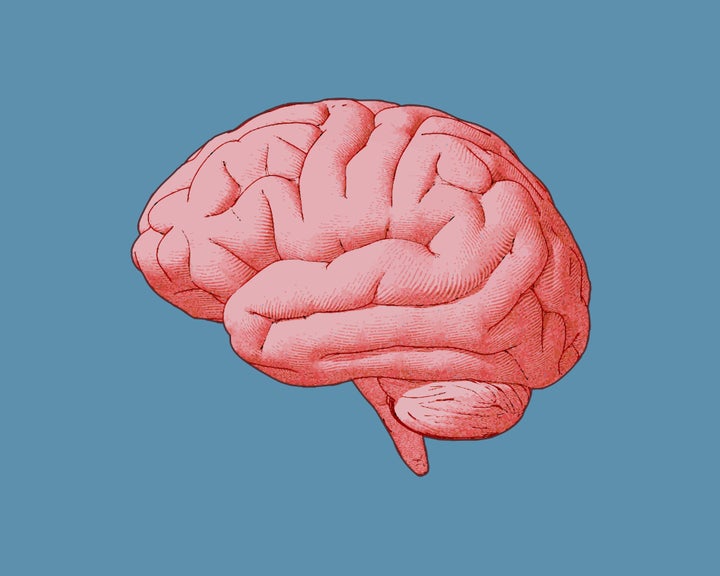You’re reading How To Get Off, our series celebrating bodies, pleasure and fantasy.
Women are always on, but is this stopping us from getting turned on? If we’re not actually doing something we’re thinking about doing it (washing up or filing our tax return or any of those 3,000 things on our to-do list that aren’t sex).
No wonder our minds often wander when we’re actually doing it. But worrying about gas bills that need paying is never going to be conducive to a good time. That’s because mindset is instrumental when it comes to the female orgasm – not only do sex therapists and sexologists believe this, but studies back it up.
One such study, from 2015, found women who regularly reached orgasm tended to focus more on the sensations of sex and how their body felt – basically, sex mindfulness – compared to women who found it harder to orgasm. A separate study found a link between a lack of “erotic thoughts” during sex and less frequent orgasm.
Negative thoughts during sex are also – perhaps unsurprisingly – a barrier. Among women, the most intrusive concerns cited tend to centre around appearance and, to a lesser degree, performance (no, it’s not just men).
Even the words we use to describe orgasm can play a part in making women less likely to come. “I prefer to think of orgasm as an ‘experience’ rather than something to ‘achieve’,” says sexologist Gigi Engle, author of All The F*cking Mistakes: A Guide To Sex, Love And Life. “The reason for this is pressure – women face enough pressure in every other area of life, so taking it off of sex is a pivotal component in having fulfilling sexual experiences.”

Some women might feel ashamed that they don’t orgasm as much as they’d like – some struggle to do it full stop (this is known as female orgasmic disorder) – but it’s actually a fairly common experience.
A survey of more than 32,000 women conducted by Massachusetts General Hospital found one in five had difficulties experiencing orgasm.
Removing the pressure to have an orgasm is key to freeing them up to happen, says Engle. “Why? Because having an orgasm is as much a mental process as it is a physical process,” she says. “When you put pressure on orgasm, you start to think you won’t have one or you have to have one – and then you don’t have one. Being in a calm, present mindset is key to allowing your brain and body to sync up for an orgasm.”
Switching on your body
Isiah McKimmie, sexologist and author of Epic Orgasms, says getting clued up on practical tips is key to reaching orgasm more easily and often. “Along with our cultural messages about sex, we also receive very little real education about sexual pleasure or get taught skills to enjoy ourselves more,” she says.
So, the basics. There are two key ingredients to the magnificent cake that is orgasm – adequate clitoral stimulation (the physical) and being in a sexy, relaxed mindset (the mental).
““When you put pressure on orgasm, you start to think you won’t have one or you have to have one – and then you don’t.”
“The clitoris is a huge part of orgasm,” says Engle. “Women are never taught about their clitoris nor are they taught to prioritise their pleasure. We’re taught to somehow have orgasms through intercourse and do whatever we can to make our partner orgasm.”
Some women can experience orgasm without clitoral stimulation. But a study published in The Journal of Sex and Marital Therapy found only 18% of women said vaginal penetration alone would do the trick. That same study found most women liked to be touched directly on the clitoris and cited up and down, with medium pressure, as their favourite way to be touched.
Spending 15-20 minutes on foreplay, especially if this includes deep kissing and oral sex, can help your orgasm along nicely, McKimmie suggests.
But in addition to the physical mechanisms at play, mindset plays an equally important part. Sex and relationship therapist Miranda Christophers says women need to feel emotionally in a place that will allow arousal, in order to get off. You need to be able to fully relax – so if you’re feeling tired or anxious, that might make things quite difficult. The idea is all about letting go.
“While not all women need to feel both to achieve orgasm, most females need to feel psychologically and physically excited and stimulated,” she says.

Turning on your mind
Once you’re clued up on the clitoral logistics, is there a way to get into a better mindset for orgasm? In the words of Meg Ryan in When Harry Met Sally: Yes, yes, yes! Communication is key, says Engle. “Your partner is not a mind reader. They are not responsible for your orgasm. You are responsible for your orgasm.”
Brits can be pretty reserved when it comes to talking about sex. A survey by eharmony found only a quarter of people in the UK are happy to talk about what goes on in the bedroom, with the over-55s least at ease. But plucking up the courage could actually change your sex life – and with two thirds of Brits saying they’re unhappy with theirs, it’s clear there’s some serious talking to be done.
Engle advises speaking to your sexual partner about what works for you, what you need – even telling them you’d like to bring your vibrator into the mix if that’s what you want. “If you lie back and think of England – as the old saying goes – you’re not going to feel pleasure, let alone have an orgasm,” she adds.
It can also help you get in the zone if you engage in relaxing, centring practices in everyday life, she says – whether that’s yoga, meditation or mindfulness.
Best of all, masturbate, says Engle. “Get yourself a high-quality sex toy – I love the We-Vibe Tango and the Womanizer – and get to know your body,” she suggests. “Find vibration patterns and rhythms that get you there. Experiment with external and internal stimulation. Try running a vibrator over your labia.and mons, and your nipples and inner thighs. When you take control of your pleasure and your orgasm, you give yourself the power to ask for what you want and to make your orgasm the centre of your experience.”
It’s time to get off
Next time you have sex, try to focus on the feeling, what turns you on – and nothing else. “Avoid focusing on performance or distractions and instead notice the pleasurable sensations within your body and allow the flow of sexually exciting thoughts or visual stimulation,” says Christophers, who advises clients to ‘fall into’ the feeling of pleasure once it starts. “If it begins by the feelings aroused by kissing, to allow themselves to immerse themselves into the feeling,” she says.
Not every sexual encounter needs a climax. “We don’t always need sex to end in an orgasm. It’s a perfectly valid choice not to, sometimes we can struggle to have an orgasm in a particular encounter,” says McKimmie. That’s okay.”
But harness your power. “The brain can really be considered our biggest sexual organ,” she says. “Our thoughts can help turn us on – or off.”
In fact, our mind is so powerful when it comes to orgasm, that some women can actually reach orgasm through thinking alone, she says. And if that’s not something to aim for someday, we don’t know what is.
How To Get Off is our answer to Valentine’s Day, celebrating bodies, pleasure and fantasy – whatever your relationship status. We’ll be exploring what really gets us off in 2020, looking at sexual awakenings, toys and erotica, and real-life experience.
